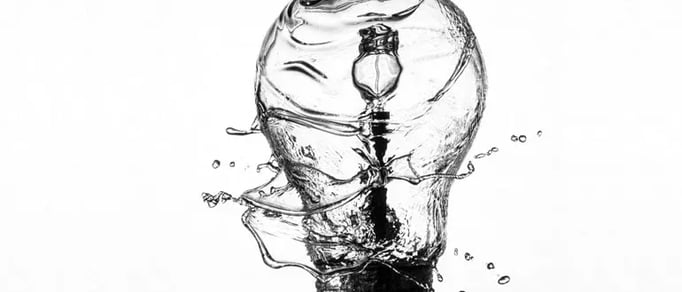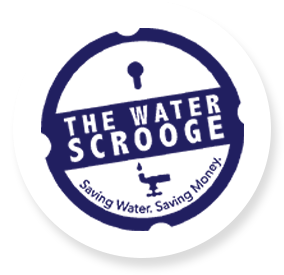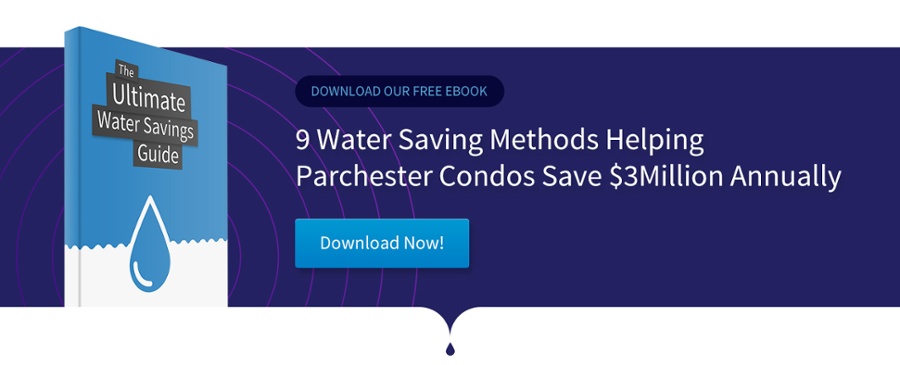
As the landlord of a large building in the Tri-state area, you know exactly how much you spend on water and energy. Water in New York City is currently $10.33/100 cubic feet and energy in commercial properties is 15.06¢/kWh — the second highest in the nation! So obviously, if there was something you could do to lower your costs, you would do it — pronto!
Fortunately, there are plenty of ways to lower the costs of your energy and water bills. The key is finding one that works for you.
The Link Between Water and Energy
Water and energy are inherently linked when it comes to building costs. The more hot water tenants use in their showers, faucets, dishwashers, and washing machines, the more energy they need to heat up the water. Therefore, when you are able to lower water use for water conservation in showers, sinks, and appliances, you will automatically lower the amount of energy used, as well.
At the same time, there are ways to independently lower your energy bills, too. Read on to find out how you can reduce water and energy use in your building, and receive lower bills as a result.
What NOT To Do
There are several tactics that are promoted as water/energy-saving, but in the end, they end up saving neither water nor energy. All landlords are left with is the hole in their pockets from the money they spent, with no savings to speak of.
Here are 3 water/energy saving tactics that sound good in theory, but in practice, probably won’t yield significant savings.
- Low-flow water fixtures - In theory, low-flow water fixtures, like showerheads, are a good way to save water. They limit the water that comes out of the showerhead or faucet so that tenants are forced to use less water. The problem with these fixtures is that tenants can feel that there is less water coming out, and suddenly, showering isn’t as comfortable as it used to be. So they take the natural next step and try to dismantle the fixtures — and they manage because standard low-flow fixtures aren’t tamper-proof.
- Tenant education - Educating tenants about the importance of water conservation is great, but it will only go so far. At the end of the day, unless your tenants are super-conscientious about the environment, they won’t have the same concern about water use and energy conservation as you do. The reason for this is simple — they are not the ones paying the bills. So while you can hang up flyers or give out leaflets about the importance of conservation, don’t expect to see significant savings from these endeavors.
- ENERGY STAR appliances - Households that use ENERGY STAR appliances can see savings of 30% a year on their energy bills. However, as a landlord of a multi-tenant building, you can’t force everyone to buy ENERGY STAR appliances. And buying them yourself can be costly, even with the potential savings. Therefore, while you can encourage energy efficiency, purchasing these appliances for your entire building might not be so realistic.
So how can you limit energy and water use? Just because there are several tactics that don’t work doesn’t mean you should despair. There are plenty of conservation methods that are ideal for landlords of large buildings. Once you know the options, you can decide which one is right for you.
Water-Saving Options
- Tamper-proof fixtures - Earlier we wrote how low-flow fixtures don’t actually play out the way you think they will. This is because they aren’t tamper-proof and tenants can easily dismantle or destroy them. However, The Water Scrooge’s tamper-proof water fixtures — including shower flow controllers, and tamper-proof faucet aerators — eliminate the problem of tenant tampering. Moreover, they work in such a way that even though less water is being used, tenants feel like more water is coming out, so they are not likely to make any complaints.
- Replace toilet flappers - Old toilet flappers can be the source of leaky toilets that tenants don’t even notice. When tenants don’t notice a leak, they can’t report it and both water and money literally get flushed down the toilet. Replacing old toilet flappers with new, WaterSense-labeled flappers can save up to 13,000 gallons of water per year per family, according to the EPA.
- Wireless monitoring - The Water Scrooge’s wireless monitoring system can identify leaks as they happen, so landlords can fix them immediately before a lot of water is wasted or serious damage is caused. The system comes with wireless sensors that can be easily attached to pipes in every unit, so landlords can track the water being used in showers, sinks, toilets, and appliances. Savings can reach as high as $500 per year per unit, which can amount to a small fortune for landlords with many apartments in their buildings.
Energy-Saving Options
- Programmable thermostats - Heating and cooling is a major energy expense of any building, but there are many parts of the building, like hallways and common areas, that don’t need constant heating/cooling. In these parts, installing a programmable thermostat can help you use less energy without making your tenants feel like you’re cutting down. Programmable thermostats are very affordable, and you can easily make back your investment through the energy you save.
- Motion light sensors and LED light fixtures - In 2019, lighting accounted for 5% of total U.S. energy consumption. Not a huge amount, but not insignificant either. Especially for landlords, when every bill is multiplied by x number of apartments, even small savings can add up. To save energy used for lighting, motion sensors and LED light fixtures are ideal. Motion sensors keep lights off when there is no one around and LED lights use 75% less energy and last 4x longer than incandescent bulbs.
- Replacing HVAC filters - Many tenants don’t realize that HVAC units (heating, ventilation, and air conditioning) units need regular upkeep. This includes replacing HVAC filters so that the appliances can work at optimal efficiency and use less energy. As a landlord, you can see a 5 to 15 percent reduction in energy consumption when you regularly replace HVAC filters.
Find Out How Much You Can Save
There are many ways to conserve energy and water, but implementing them all at once isn’t very realistic. For one, it would take a lot of time and work, and secondly, it would become very costly. So rather than take on everything at once, pick one or two cost-saving ideas and implement them. If you’re not sure which methods to try, you can check out our savings calculator and see how much you can save with The Water Scrooge products.




